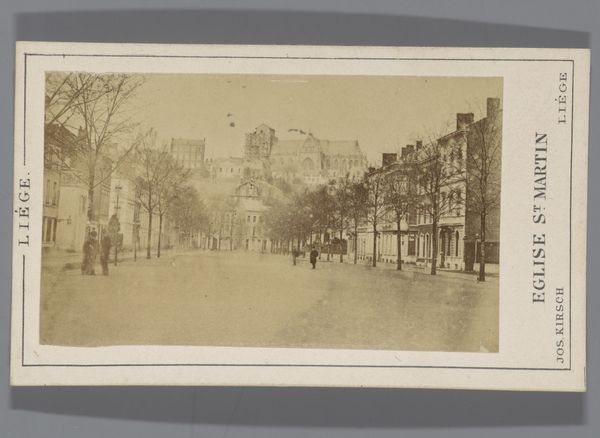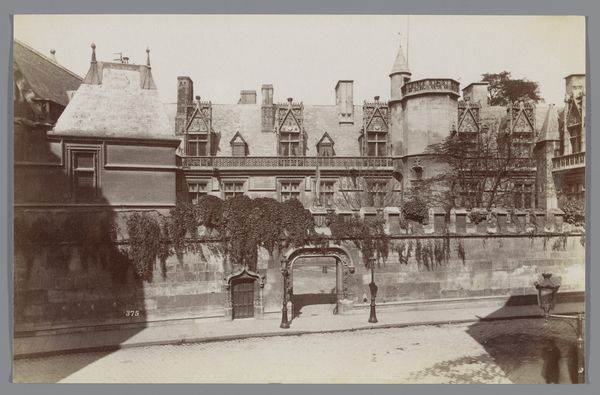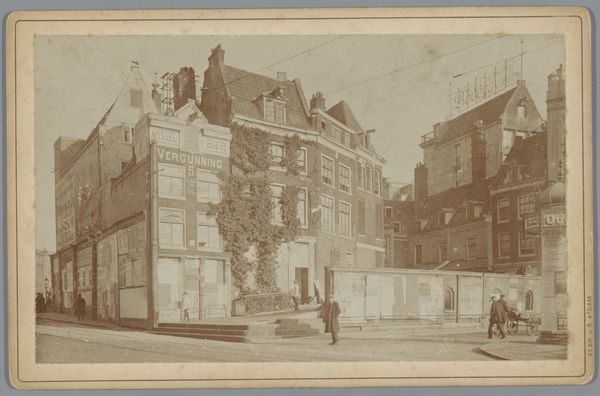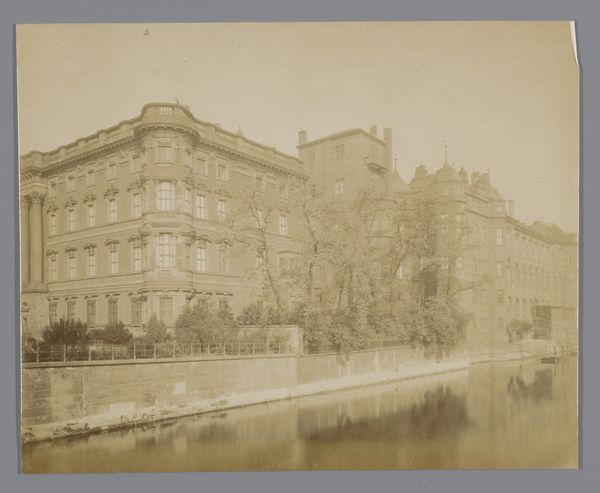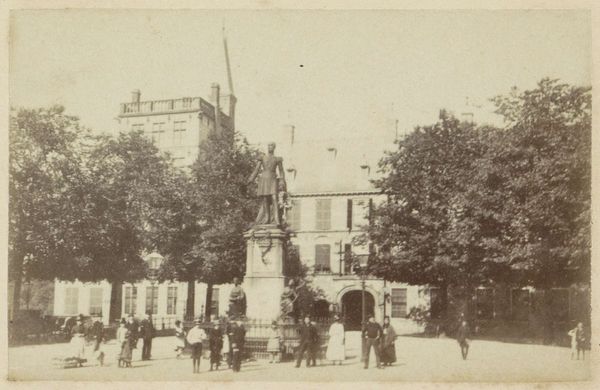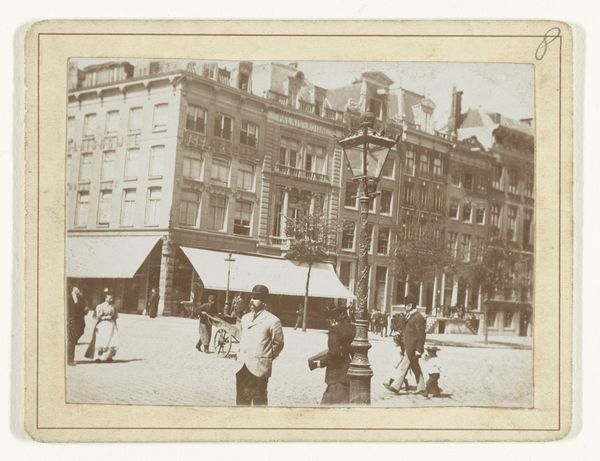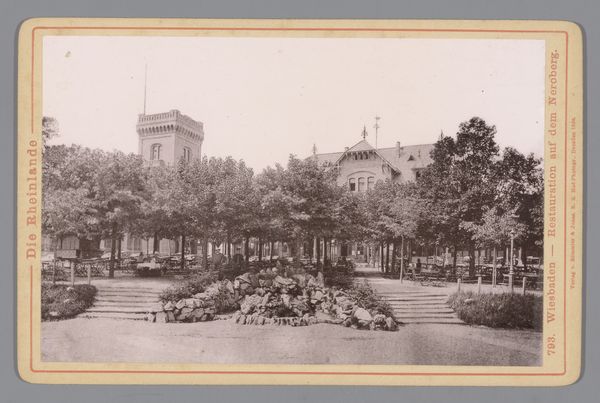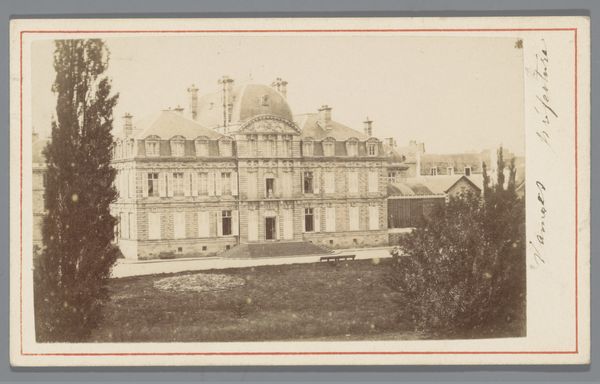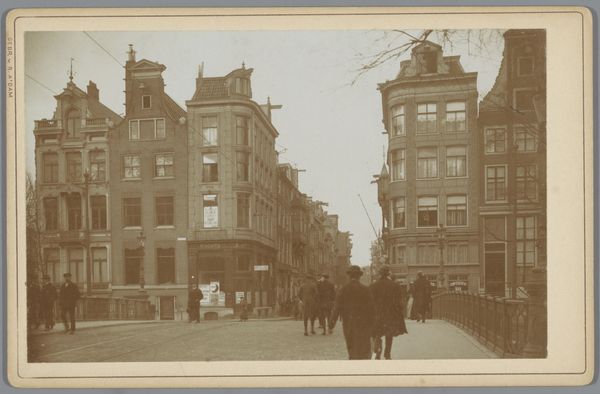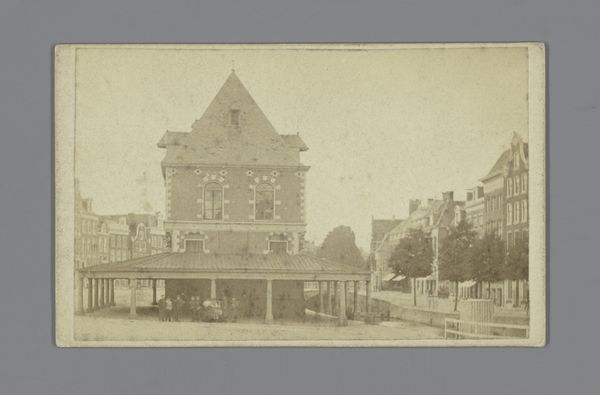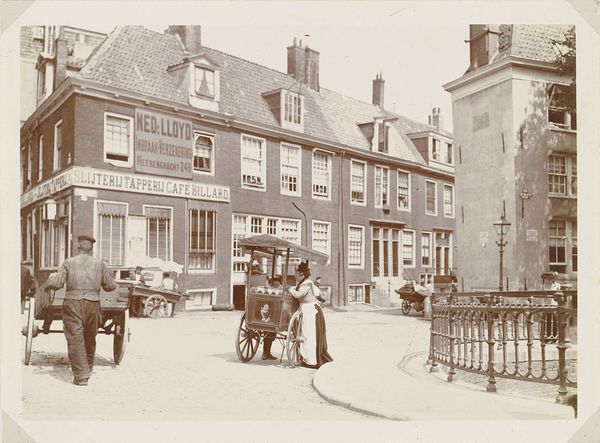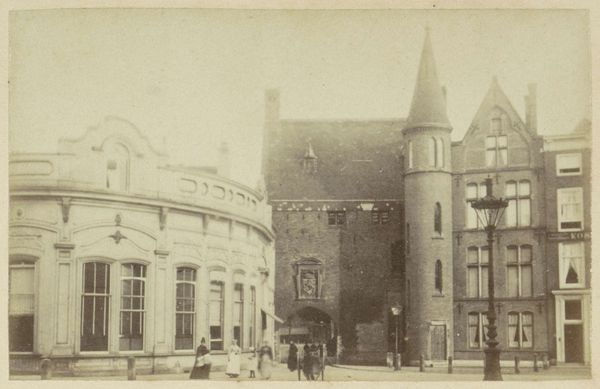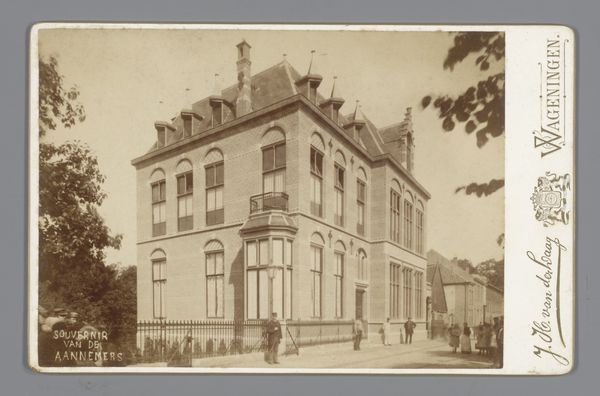
Dimensions: height 101 mm, width 150 mm
Copyright: Rijks Museum: Open Domain
Editor: This gelatin-silver print, "Vue des Etablissements de Paris," dating from between 1930 and 1960 and attributed to Helio-Cachan, presents a Parisian street scene that feels frozen in time. The contrast between the horse-drawn cart and the parked car is striking. What symbolic elements or meanings jump out to you? Curator: Immediately, I’m struck by the way this photograph seems to yearn for a lost era while acknowledging the unavoidable presence of modernity. The horse-drawn cart is positioned as a poignant emblem, set against the backdrop of grand architecture – buildings that themselves hold layers of history and cultural memory. Consider the repetition of horizontal lines—the building's facade, the road, the cart—could these lines convey stability, or perhaps even constraint? Editor: Constraint is an interesting idea. I was thinking about how the trees soften the rigid lines of the architecture. Curator: Precisely. The organic forms of the trees disrupt the strict geometry, suggesting nature's enduring influence and perhaps a counterpoint to the urban structure. And think about the absence of people. The photograph seems devoid of life, which emphasizes the weight of the past while also reflecting, perhaps unconsciously, the societal shifts underway. Do you perceive this sense of absence? Editor: I do see the absence. It gives the photograph a quiet, almost haunting quality. The presence of vehicles both old and new in this instance, symbolize technological and cultural shift? It almost speaks to a dialogue between eras. Curator: Precisely. We see the dialogue visually. This interplay of old and new invites us to reflect on how societies remember – and sometimes forget – their past as they move into the future. It offers a complex meditation on time itself, and the ever-evolving character of the city. Editor: It’s amazing how much a single photograph can convey about cultural memory. Curator: Indeed. The symbolism embedded within this seemingly simple cityscape resonates deeply when we consider its historical context.
Comments
No comments
Be the first to comment and join the conversation on the ultimate creative platform.
